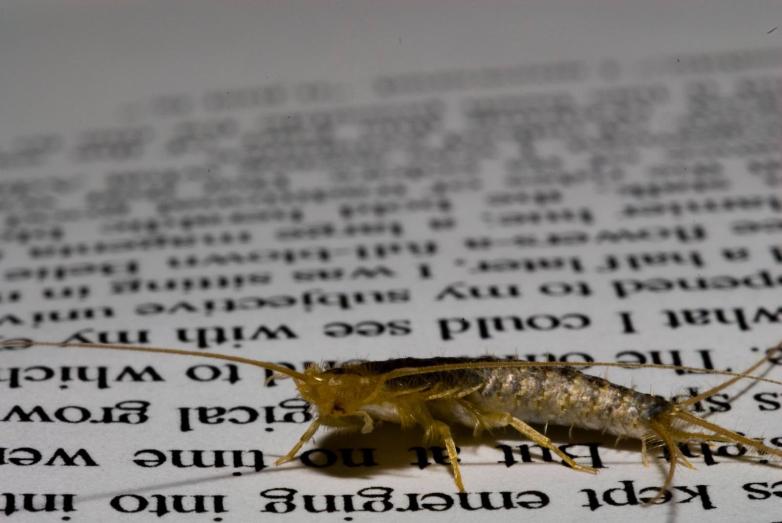Silverfish Top Rare Books Pest Survey at National Trust Properties
The National Trust’s annual insect pests report has found that Silverfish (Lepisma saccharina), which feed on books, paper and cotton, retained top spot with recorded numbers rising by six per cent.
The report collates information gathered by house staff around the Trust, helping the charity to safeguard more than one million collection objects, from precious books and tapestries to silk hangings on state beds.
The Trust’s Assistant National Conservator Alexandra Radford, who compiled the report, said: "This slight rise does coincide with the UK becoming wetter over the past few decades. While we aren’t necessarily getting more rain, incidents of heavy rainfall have slightly increased. These more intense periods of rainfall can lead to water run-off and flooding, and we know silverfish will seek out and thrive in damp environments.”
Also on the rise are woolly bear (carpet beetle larvae which feed on silk, wool, fur and feathers) and booklice. Booklice and silverfish can graze on mould, with higher numbers to be expected when there is intensely wet weather and high humidity.
"Our booklice visitors appear to be more familiar within our collection spaces over the past few years," said Radford. "Because mould is very appetising to booklice and silverfish, our collections and house teams continue to monitor areas that could be more vulnerable to mould outbreaks, allowing them to take a more targeted approach.”
Overall insect counts were down by 11%, compared to the Trust’s 2022 Integrated Pest Management data. This was likely helped by another year of turbulent weather, with Met Office data showing 2023 was the second-warmest year on record for the UK, with Wales and Northern Ireland having their warmest ever years. It was also a wet year for many.
Alexandra said: “Nature is reflecting back the impact of these extremes. Without a doubt, the ongoing unpredictability and extremes in temperatures and moisture are feeding through into insect breeding cycles and patterns.”
There was positive news from the East of England, where monitoring showed steady declines in insect pest counts in historic houses. These have been helped in part by work to control clothes moths and silverfish at Blickling Hall in Norfolk, where a trial of moth pheromones has been particularly effective.
But the report also found that the traditional spring and summer breeding periods are continuing to merge into one, possibly driven by earlier springs and more protracted, mild autumns.
“In the past, we saw a more distinct spike in breeding cycles," said Radford, "but these are becoming blurred. Optimum breeding conditions are starting earlier and carrying on for a longer period of time to create one long reproductive season. Knowing this will help house teams prepare for the peak times when nymphs and larvae begin to emerge and take action before they start causing problems for our collections.”
















